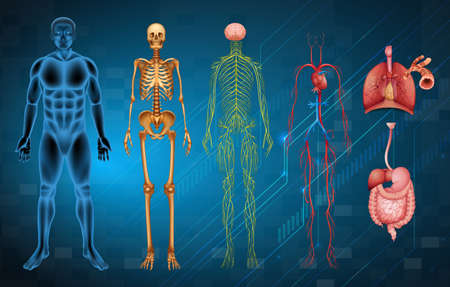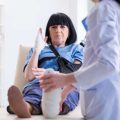Introduction to Gait Training and the NHS
Gait training stands as a cornerstone within physical rehabilitation, focusing on helping individuals regain or improve their ability to walk safely and efficiently. Whether resulting from neurological conditions, musculoskeletal injuries, or age-related decline, difficulties with gait can significantly impact one’s independence and quality of life. In the United Kingdom, the National Health Service (NHS) plays a pivotal role in ensuring that people across all communities have access to high-quality gait training programmes. The NHS integrates evidence-based practices into rehabilitation services, providing holistic support that addresses not only physical mobility but also the psychological and social aspects of recovery. As a publicly funded system, the NHS is uniquely positioned to reach diverse populations, delivering tailored gait training through multidisciplinary teams based in hospitals, community clinics, and even patients’ homes. This centralised approach allows for continuity of care and equitable access, making a profound difference in the lives of those seeking to reclaim their mobility after illness or injury.
2. Current Structure and Delivery of Gait Training Programmes
Within the NHS, gait training programmes are structured around a patient-centred and evidence-based approach, ensuring that individuals receive tailored interventions to maximise their mobility and independence. The delivery of these programmes relies heavily on multidisciplinary teamwork, bringing together a range of healthcare professionals with complementary expertise. At the core of this system are specialist physiotherapists, who play a pivotal role in assessing patients’ needs, designing bespoke gait rehabilitation plans, and guiding progress through ongoing evaluation.
Multidisciplinary Teamwork in Practice
The effectiveness of gait training within the NHS is driven by collaboration among various professionals, each contributing unique skills. Typical teams may include:
| Professional | Role in Gait Training |
|---|---|
| Physiotherapist | Leads assessment, designs exercise regimes, monitors progress |
| Occupational Therapist | Focuses on functional tasks and adaptations for daily living |
| Consultant (e.g. Neurologist or Orthopaedic Surgeon) | Provides diagnosis and oversees medical management |
| Podiatrist | Assesses foot biomechanics and recommends orthotics if needed |
| Rehabilitation Nurse | Supports ongoing care, education, and coordination with community services |
Specialist Physiotherapists: The Linchpin of Gait Rehabilitation
NHS physiotherapists specialising in gait training utilise a broad toolkit, from manual therapy and strength exercises to state-of-the-art technologies such as treadmill-based rehab and robotic-assisted devices. Their expertise enables them to identify nuanced movement patterns and adapt training accordingly. Many trusts also invest in continuous professional development to ensure their staff remain at the cutting edge of rehabilitation science.
Programme Delivery Pathways
Gait training typically begins with a thorough assessment in an outpatient clinic or hospital setting. Interventions may be delivered one-to-one or in group classes, depending on patient needs and service resources. Increasingly, home-based programmes and digital platforms are being incorporated to supplement face-to-face sessions—an evolution accelerated by the need for flexible care during recent years.
A Summary of Key Features in NHS Gait Training Delivery:
- Personalised Assessment: Comprehensive evaluation ensures interventions target individual goals.
- Integrated Care: Multidisciplinary input optimises recovery outcomes.
- Evidence-Based Interventions: All techniques align with NICE guidelines and current research.
- Accessible Services: Commitment to reducing health inequalities across the UK.
- Continuous Monitoring: Regular reviews ensure adaptive planning for sustained progress.
This structure underpins the NHS’s evolving approach to advancing gait training programmes, laying a solid foundation for future innovation and improvement.

3. Innovation and Technological Advancements
The NHS has long recognised that progress in gait training depends not only on skilled clinicians but also on embracing innovation. Over recent years, a significant shift has occurred within NHS trusts across the UK: there is now a strong drive to integrate cutting-edge technology and evidence-based practices into everyday rehabilitation services. This forward-thinking approach aims to ensure that patients receive the most effective and up-to-date interventions possible, regardless of their location or background.
Robotics in Gait Rehabilitation
One of the most exciting developments is the growing use of robotics in NHS gait training programmes. Robotic exoskeletons and treadmill systems with body-weight support are being introduced in several NHS centres, providing patients with intensive, repetitive movement practice that can be difficult to achieve through manual therapy alone. These devices not only enhance patient engagement but also help therapists tailor rehabilitation plans more precisely, tracking progress with impressive accuracy.
Virtual Reality for Enhanced Motivation
The NHS has also begun to incorporate virtual reality (VR) into physiotherapy suites, transforming how patients experience rehabilitation. VR environments can simulate real-world challenges—such as crossing busy streets or navigating uneven pavements—within a safe, controlled setting. Many patients report that these immersive scenarios make therapy sessions more enjoyable and motivating, which is especially important for long-term adherence and recovery outcomes.
Data-Driven Approaches
Alongside hardware innovations, the NHS is leveraging data analytics and wearable technologies to monitor patient progress continuously. Smart insoles, motion sensors, and mobile apps collect valuable information about a patient’s walking patterns, balance, and step count. Clinicians use this data to make informed adjustments to treatment plans in real-time, ensuring interventions remain personalised and responsive to each individual’s needs.
Commitment to Evidence-Based Practice
Crucially, the NHS remains committed to grounding all new initiatives in robust scientific evidence. Before adopting any new technology widely, NHS teams rigorously evaluate its clinical effectiveness through pilot projects and research collaborations with leading universities. This practical yet cautious approach ensures that every innovation truly benefits patients while safeguarding limited healthcare resources—a reflection of the NHS’s responsibility to both quality care and public trust.
Shaping the Future of Gait Training
By investing in technological advancements and fostering an evidence-led culture, the NHS continues to lead by example within the UK’s healthcare landscape. The integration of robotics, virtual reality, and data-driven methods into gait training not only empowers patients but also equips therapists with better tools than ever before. Ultimately, this spirit of innovation is reshaping what’s possible in rehabilitation—and it’s happening right here on British soil.
Accessibility and Inclusivity
The NHS has long championed the principle that high-quality healthcare should be available to everyone, regardless of postcode or personal circumstance. When it comes to gait training programmes, ensuring accessibility and inclusivity remains a cornerstone of NHS strategy. The commitment to reducing health inequalities is reflected in several practical approaches designed to break down barriers, whether they be geographical, socio-economic, or cultural.
NHS Strategies for Widening Access
To make gait training services truly accessible, the NHS employs a range of targeted strategies. These include providing localised rehabilitation clinics in both urban and rural areas, integrating community outreach with specialist physiotherapy teams, and leveraging digital health platforms for remote consultations. By offering flexible service delivery models, the NHS ensures that individuals from diverse backgrounds can benefit from timely and effective gait rehabilitation.
Efforts to Reduce Health Inequalities
Addressing health inequalities is central to the NHS ethos. There is a clear recognition that certain groups—such as those from deprived communities or minority ethnic backgrounds—may face additional obstacles in accessing rehabilitation services. To counter this, the NHS invests in culturally sensitive care pathways, translation services, and community engagement initiatives. Moreover, funding is often prioritised for areas with higher indices of deprivation, ensuring resources are directed where they are needed most.
Summary of Key Accessibility Measures
| Strategy | Description | Target Group |
|---|---|---|
| Local Clinics | Establishing gait training facilities in both city centres and remote locations | Urban & rural populations |
| Telehealth Services | Providing virtual gait assessments and follow-ups via digital platforms | Patients with mobility or transport issues |
| Cultural Adaptation | Offering translated materials and culturally tailored programmes | Minority ethnic groups |
| Community Outreach | Engaging local leaders and voluntary organisations to raise awareness | Hard-to-reach communities |
| Prioritised Funding | Allocating additional resources to deprived regions based on need | Areas with high health inequality indices |
Through these multi-faceted strategies, the NHS demonstrates its ongoing commitment to ensuring that no one is left behind in accessing life-changing gait training programmes. The focus on inclusivity not only improves individual outcomes but also strengthens community health resilience across the country.
5. Training, Professional Development, and NHS Standards
One of the NHS’s most pivotal responsibilities in advancing gait training programmes lies in its commitment to rigorous staff training, ongoing professional development, and the maintenance of high clinical standards. In the dynamic field of gait rehabilitation, innovations are frequent—from novel physiotherapy techniques to emerging assistive technologies—making it essential that healthcare professionals remain abreast of the latest evidence-based practices.
The NHS has developed a robust framework for staff training which ensures that physiotherapists, occupational therapists, and other allied health professionals receive continual education. This includes mandatory CPD (Continuing Professional Development) sessions, multidisciplinary workshops, and access to both in-person and online courses tailored to the specifics of gait analysis and therapy. By leveraging partnerships with leading UK universities and research institutions, the NHS also facilitates placements and mentorships that keep staff at the cutting edge of their field.
Maintaining high standards is not just about technical know-how; it’s also about fostering a culture of reflective practice. The NHS encourages clinicians to regularly evaluate their own performance through peer reviews, audit cycles, and feedback from patients. This emphasis on self-improvement ensures that each gait rehabilitation plan is both personalised and grounded in best practice guidelines.
Furthermore, national standards—such as those set by NICE (National Institute for Health and Care Excellence)—serve as a benchmark for quality across all NHS trusts. These guidelines ensure consistency in assessment protocols, intervention planning, and outcome measurement regardless of where a patient receives care in the UK. The NHS’s adherence to such standards not only elevates the level of care but also reassures patients that they are receiving interventions aligned with the latest clinical evidence.
From my experience working within NHS services, these opportunities for professional growth have been invaluable. Regular updates on new research findings or hands-on workshops introducing advanced gait analysis tools directly translate into more effective and engaging rehabilitation sessions for patients. The supportive environment created by NHS leadership inspires confidence among staff to innovate while remaining accountable to well-established clinical frameworks.
6. Challenges and Opportunities for the Future
The NHS has made significant strides in advancing gait training programmes, yet several challenges persist that require strategic attention. One of the foremost barriers is the ongoing pressure on resources, both in terms of staffing and equipment. With ever-increasing patient loads and limited budgets, ensuring consistent access to up-to-date technologies and highly trained professionals remains a core issue. Furthermore, variations in service provision across different regions can lead to inequalities in patient outcomes, with some communities benefitting from advanced rehabilitation techniques while others experience delays or lack of access.
Despite these hurdles, there are clear opportunities on the horizon. The integration of digital health tools, such as tele-rehabilitation platforms and wearable gait analysis devices, offers new ways to deliver personalised care and monitor progress remotely. These innovations not only reduce travel burdens for patients but also enable clinicians to make data-driven decisions more efficiently. Moreover, fostering stronger collaborations between NHS trusts, universities, and private sector partners can accelerate research and implementation of cutting-edge therapies.
Another promising avenue lies in staff development. By investing in ongoing training and interdisciplinary knowledge sharing, the NHS can empower its workforce to adopt best practices and stay abreast of evolving rehabilitation methods. Patient engagement is equally vital; involving service users in programme design ensures that interventions remain relevant and tailored to real-world needs.
Looking ahead, addressing current barriers while embracing technological advancements presents a unique opportunity for the NHS to enhance gait training outcomes. Through sustained commitment to innovation, equity, and patient-centred care, the NHS can continue to set benchmarks for rehabilitation services not just in the UK, but globally.


